Understanding the Individual Skills Report for aMath™ and aReading™
By Rachel Brown, Ph.D., NCSP
The Individual Skills Report is an excellent resource for teachers to review the specific items that students answered correctly or incorrectly on FAST™ screening assessments. The information on this report varies according to the types of items on each FAST™ assessment. The information included about student performance on aMath™ and aReading™ is different than other assessments because these measures are computer-adaptive tests (CAT). When taking a CAT, each student starts with items at his or her grade level, but then the items adapt based on answers to prior questions. In this way, the assessment identifies each student’s current skill level. The adaptive nature of aMath™ and aReading™ means that each student completes a different version of the test. For this reason, the specific items that each student completed are not shown in the report. This report gives a summary of students’ reading or math levels based on their aMath and aReading performance. The Individual Skills Reports for aMath™ and aReading™ are organized around the domains in the Common Core State Standards (CCSS).
aMath™ Individual Skills Report
The CCSS for math include the following domains. Note that not all of these domains are included at every grade level, so the specific ones for each student can vary.
- Counting & Cardinality: Know the number names and the counting sequence
- Operations & Algebraic Thinking: Understand the principles of, and facts for, addition, subtraction, multiplication, and division
- Number & Operations in Base Ten: Work with numbers in relation to their base ten values to solve problems
- Number & Operations—Fractions: Work with fractions and mixed numbers to solve problems
- Measurement & Data: Classify, describe, measure, and analyze different types of data
- Geometry: Identifying, describing, analyzing, comparing, and measuring different shapes
- Ratios & Proportional Relationships: Understand ratio concepts and use ratio reasoning to solve problems
- The Number System: Under and use rational and non-rational numbers
- Expressions & Equations: Solve real-life and mathematical problems using linear and non-linear equations with numerical and algebraic expressions.
- Functions: Use a variety of functions to model relationships between and among quantities
- Statistics & Probability: Use statistical data to interpret categorical and quantitative data, make inferences and justify conclusions, and apply probability rules to make decisions
Here is an example of the top of the Individual Skills Report for aMath:™

It shows the student’s score, risk level and percentile ranking for the class, school, district, and nation. Below the score summary is a section where the student’s skills in each included CCSS math domain are listed in relation to mastered, developing, and future instruction. In the following example, we see the summary for Counting and Cardinality.

This student has not mastered any of these skills and they are all listed as developing. In addition, no skills are listed for the future because these are foundational math skills and must be mastered before other skills are learned.
aReading™ Individual Skills Report
The Individual Skills Report for aReading™ is now organized in a similar fashion to the one for aMath.™ The original version of the Individual Skills Report organized each student’s skills according to the “big 5” reading skills identified in the National Reading Panel (NRP, 2000) report. This organization was developed prior to the CCSS which were published in 2010. Although not all U.S. states have adopted the CCSS, a large majority have and they serve as an additional organizational framework for reading instruction across grade levels. Given the large presence of CCSS in state requirements and published curricula, FastBridge® reviewed all aReading™ items and coded them according to the CCSS reading standards instead of the NRP domains. This re-coding means that the aReading™
Individual Skills Report now displays students’ reading skills in relation to the four main CCSS reading skill areas:
- Foundational Skills: Includes skills related to mastery of the concepts of print, alphabetic principle, and other basic conventions of the English writing system.
- Informational Reading: Includes skills related to understanding and responding to content area texts (i.e., non-fiction).
- Language: Includes skills related to listening and speaking in English.
- Reading Literature: Includes skills related to understanding and responding to literary texts (i.e., fiction).
This organization provides more depth for teachers at higher grades who reported difficulty using the prior version of the aReading Individual Skills Report for students who had mastered the Foundational Skills (e.g., concepts of print, phonemic awareness, phonics, fluency) but needed ongoing instruction in vocabulary and comprehension.
The top portion of the report includes a score summary similar to the one for aMath.™

The following sections include boxes with the student’s skills in each domain organized by mastered, developing, and future learning. Below are examples of the skills lists for the four CCSS reading standard domains.
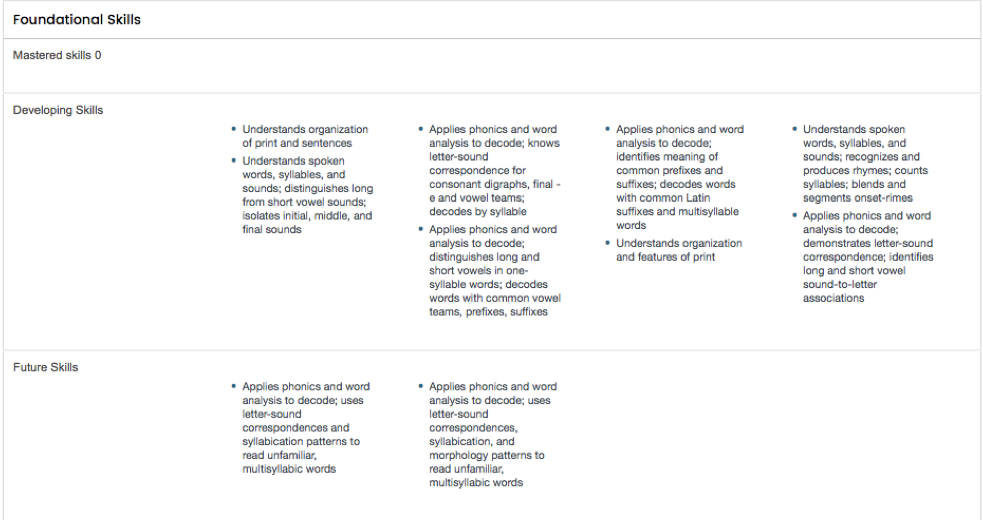
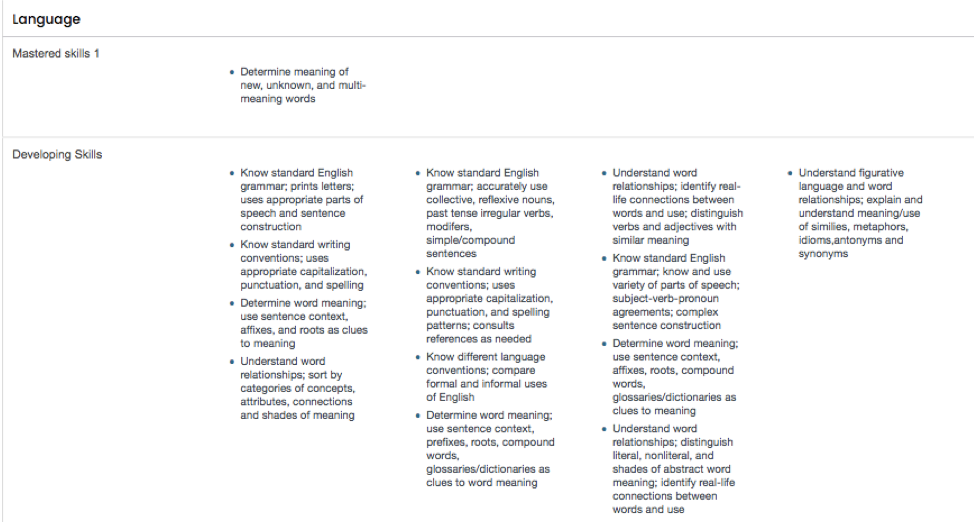
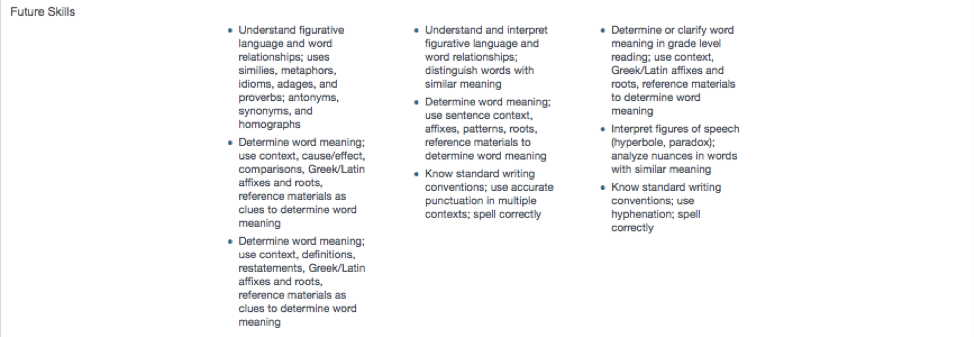

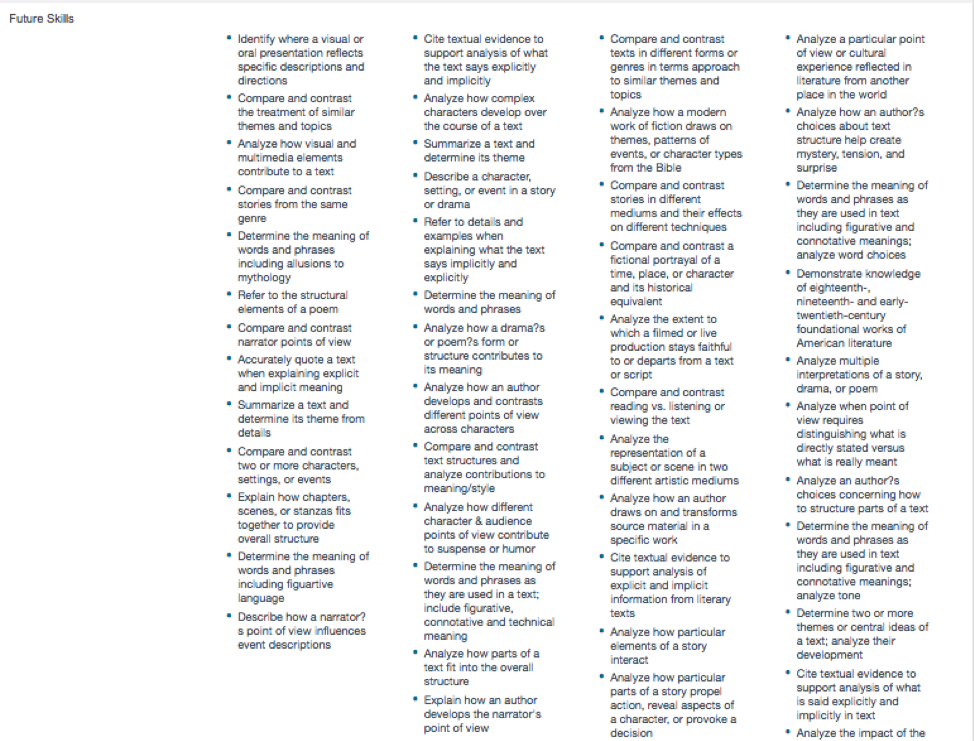
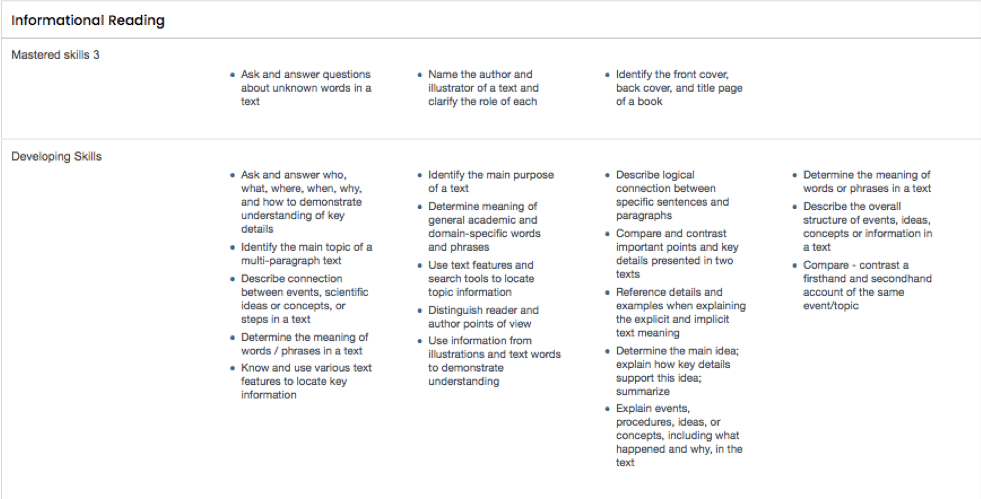

Notably, the skills lists are much longer in the new organization. This is because many more specific skills are now included, especially for high achieving students and those in the upper grades. In general, the recommended guidance for teachers is to focus on each student’s developing skills when planning instruction.
The Individual Skills Report is designed to provide teachers with details about what skills a student needs to work on next. The information in this report for aMath™ and aReading™ is somewhat different than in other FAST™ assessments because these tests are CATs. The aMath™ and aReading™ versions are organized according to the CCSS and offer teachers information about which skills a student has mastered, is developing or needs to learn in the future. It is important to note that these reports are for screening purposes and not diagnostic. Each student does not complete enough questions in all skill areas for this assessment to diagnose specific deficits. Additional resources related to the aMath™ and aReading™ Individual Skills Report can be found in the FastBridge® Knowledge Base.

